Conocybe apala, commonly known as the white dunce cap or milky conecap, is a small and delicate mushroom found in various grassy habitats across North America and Europe. While the milky conecap is an easily overlooked mushroom due to its small size and fragile nature, it has several distinguishing features that make it identifiable:
This is not a good edible species, but one that is commonly encountered due to its tendency to grow in lawns and meadows across urban, suburban, and rural landscapes. It is a morning mushroom, often showing up in the wee hours of the day, only to dry up and disappear by mid-afternoon when the sun is out.
- Scientific name: Conocybe apala
- Common names: White dunce cap, milky conecap
- Habitat: Lawns, meadows, grassy areas
- Edibility: Inedible, potential toxicity
- Psychoactive properties: None
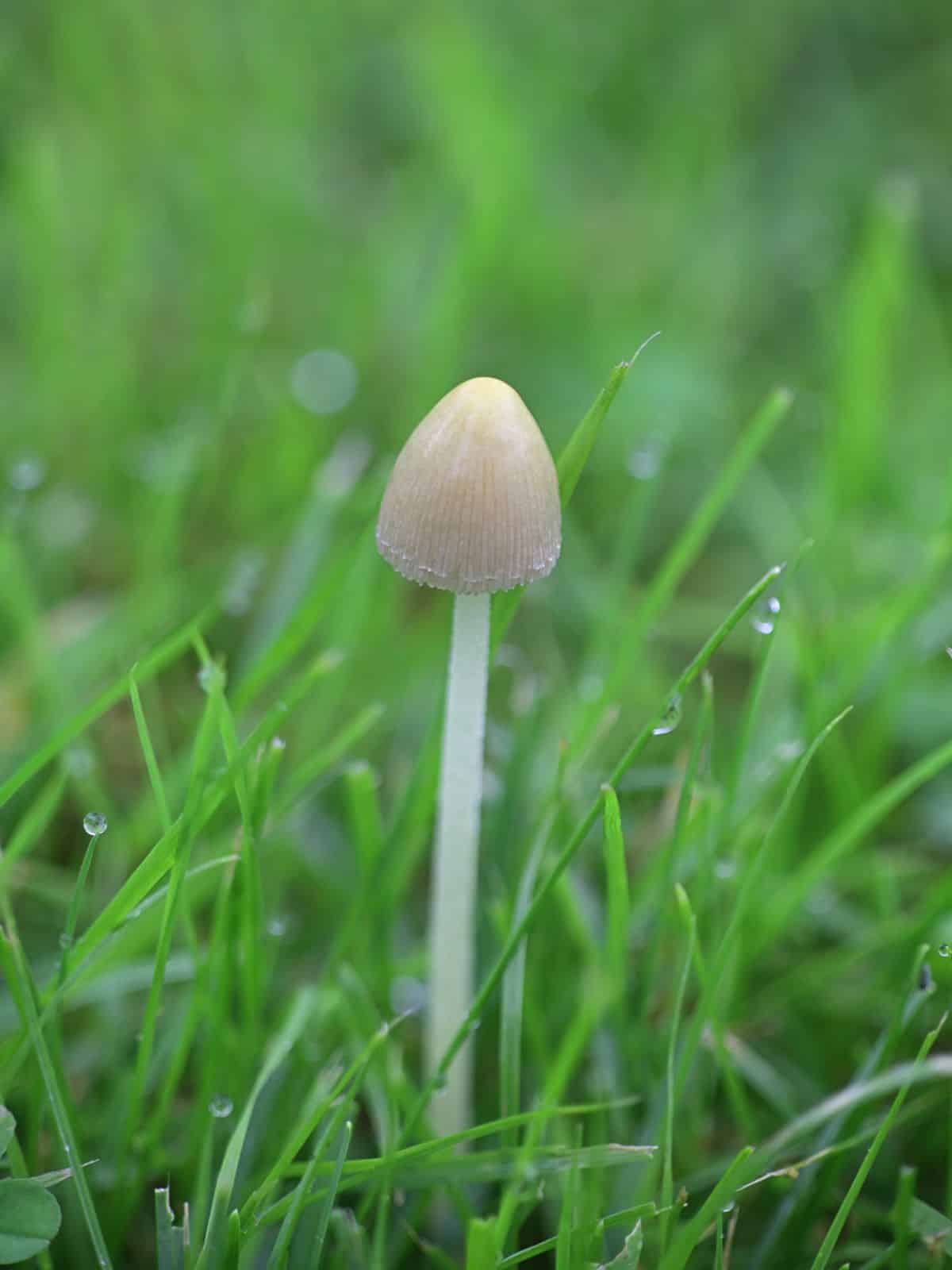
Jump to:
All About Milky Conecaps
The milky conecap is widely distributed across North America and Europe. It is important to note that while the European and American forms of the milky conecap are very similar, they may be separate species.
The mushroom species has undergone several name changes over the years. Previously, it was named as Conocybe lactea or Conocybe albipes. The name “milky conecap” comes from its hood-shaped conical cap, resembling the pointed hats historically worn by individuals branded as “dunces.”
In North America, there are approximately 50 species of Conocybe. Most are small, unsubstantial lawn mushrooms. A couple of Conocybe species and some species that were formally in the Conocybe genus contain the hallucinogenic compounds psilocin and psilocybin. None of these occur in the United States. A few of these hallucinogenics grow in Mexico.
The milky conecap is mildly toxic, containing a minor toxin similar to that found in death caps, but not as dangerous. It won’t kill you, but could cause problems, so it is best avoided.
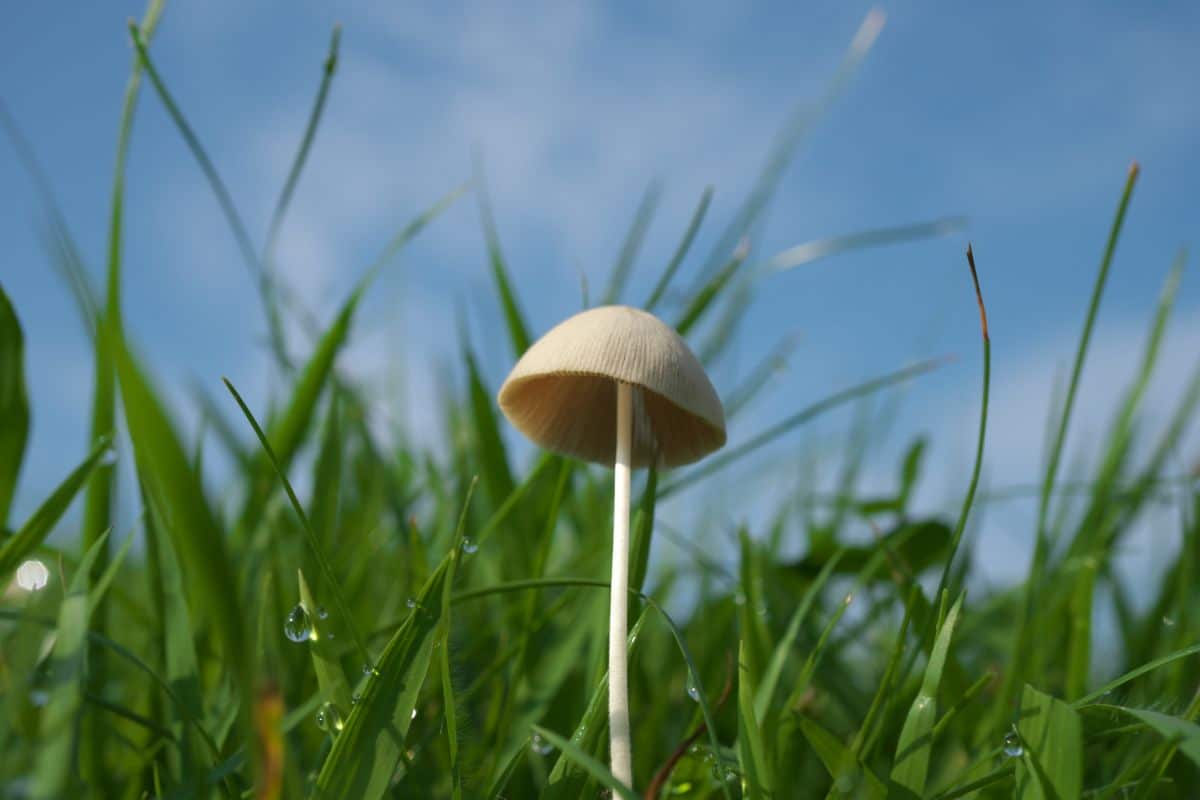
Milky Conecap Identification Guide
Season
The fruiting season for milky conecaps starts in June and lasts until October. It usually appears after heavy rain showers and is especially common in muggy weather.
Habitat
This is a saprobic fungus, meaning it feeds on decaying organic matter. It thrives in grassy areas such as lawns, meadows, pastures, and parks. It also appears on leaf litter, sawdust, and woodchip mulch. The mushroom is particularly common in short green grass and close-cropped fields.
This mushroom grows singularly, in scattered groupings, or dense bunches. It always grows from the ground and never from trees. The fruiting bodies appear rather quickly and will disappear just as fast. It is not uncommon to see it in the morning, taking in the morning dew, then be shriveled entirely and dried by mid-afternoon when the hot sun dehydrates it.
It is almost impossible to pick this mushroom without breaking it due to its fragility. The cap flesh is very thin, as is the stem, making both prone to falling apart at your touch.
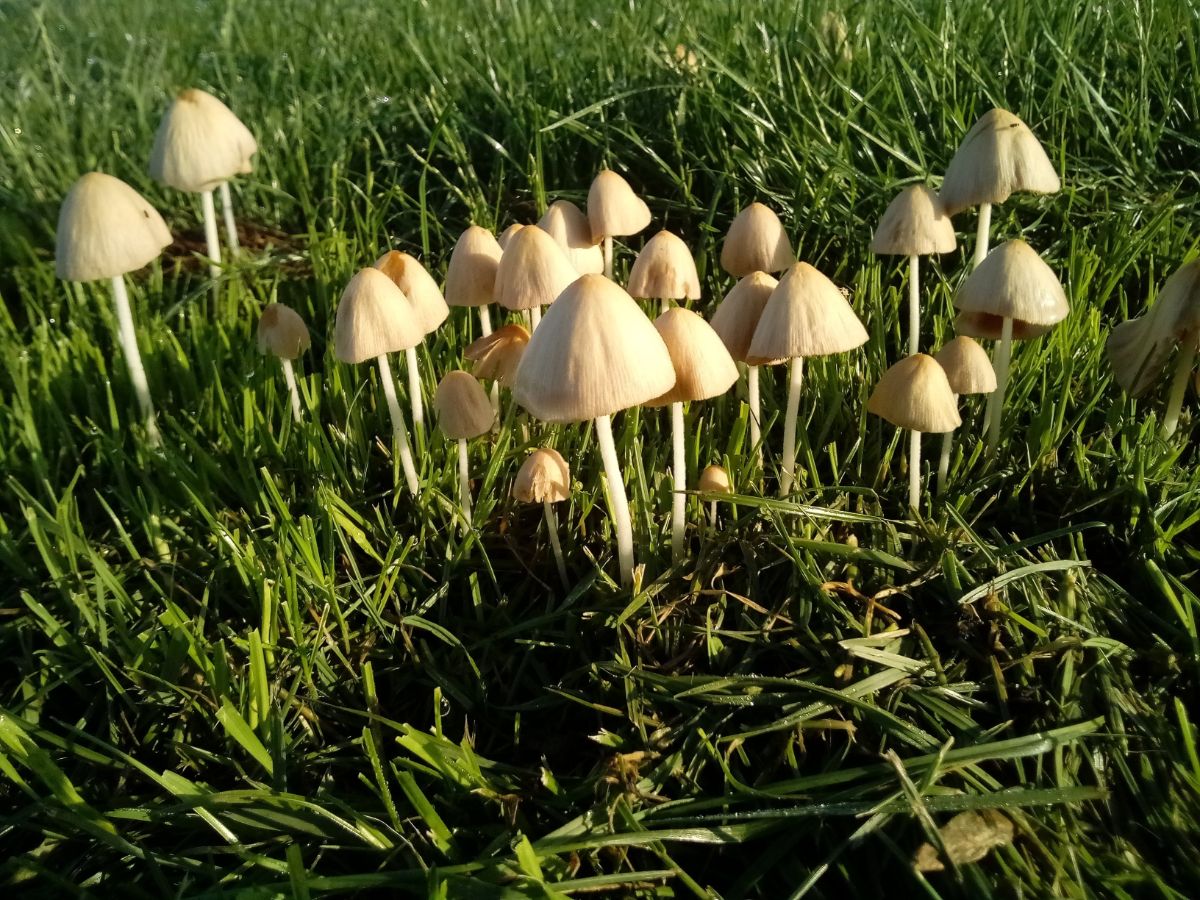
Identification
Cap
The cap is conical when young but becomes broadly conical and droopy with age. Sometimes it has a bell-shaped center protrusion or an uplifted edge. Its color ranges from whitish or buff to slightly darker tan at the center. The diameter is usually between ½-1.20 inches. The surface is dry, has no decorations, and is often finely vertically lined.
Gills
The gills are attached to the stem, close or crowded, and there is a mix of short and long gills. Short gills do not attach to the stem. They are initially pale but soon turn cinnamon brown. In hot, humid weather, they may dissolve.
Stem
Milky conecap stems are incredibly fragile and thin. The stem measures 2.75- to 4 inches long; it is long and skinny, balancing the cone-shaped cap on top. It is hollow, is equal in length or has a small rounded base, and is whitish to very light yellowish color. The stem either has no decorations, or the upper part may have tiny scattered hairs.
Flesh
The flesh is thin and whitish, with almost no substance. It does not have any distinct taste or odor.
Spore Print
Cinnamon brown in color.

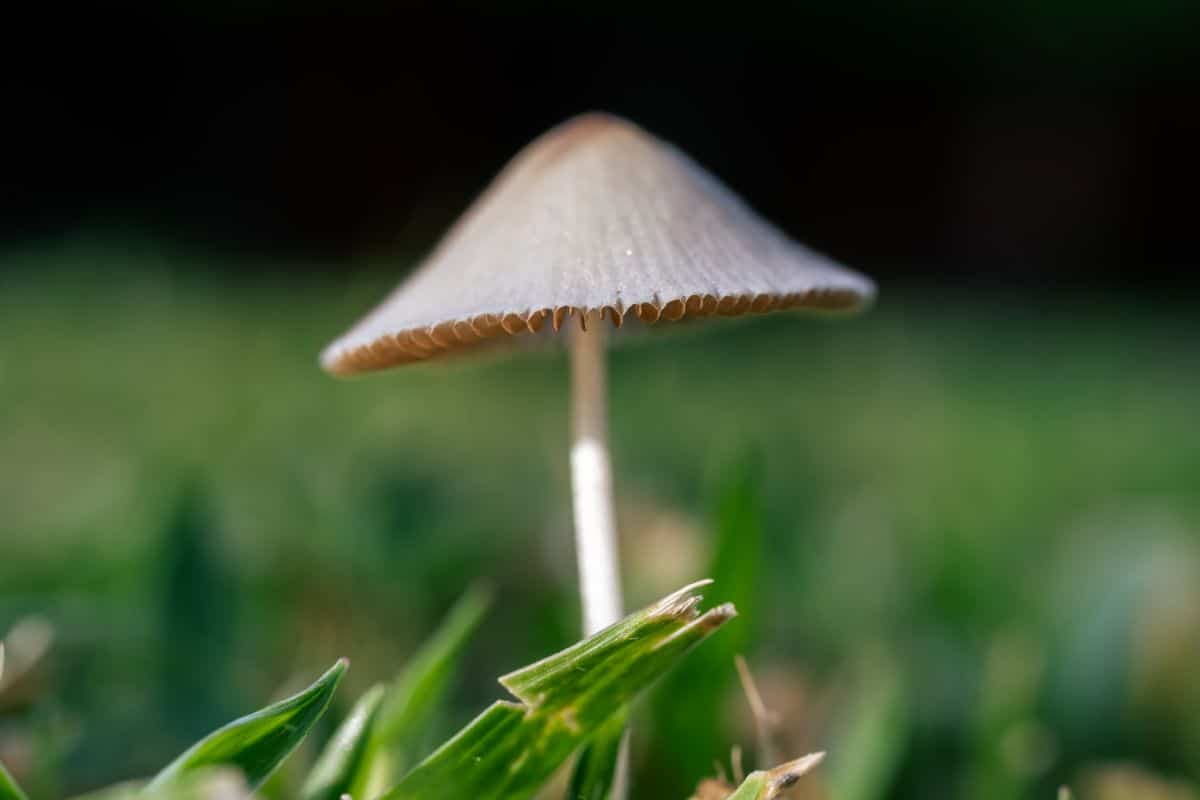
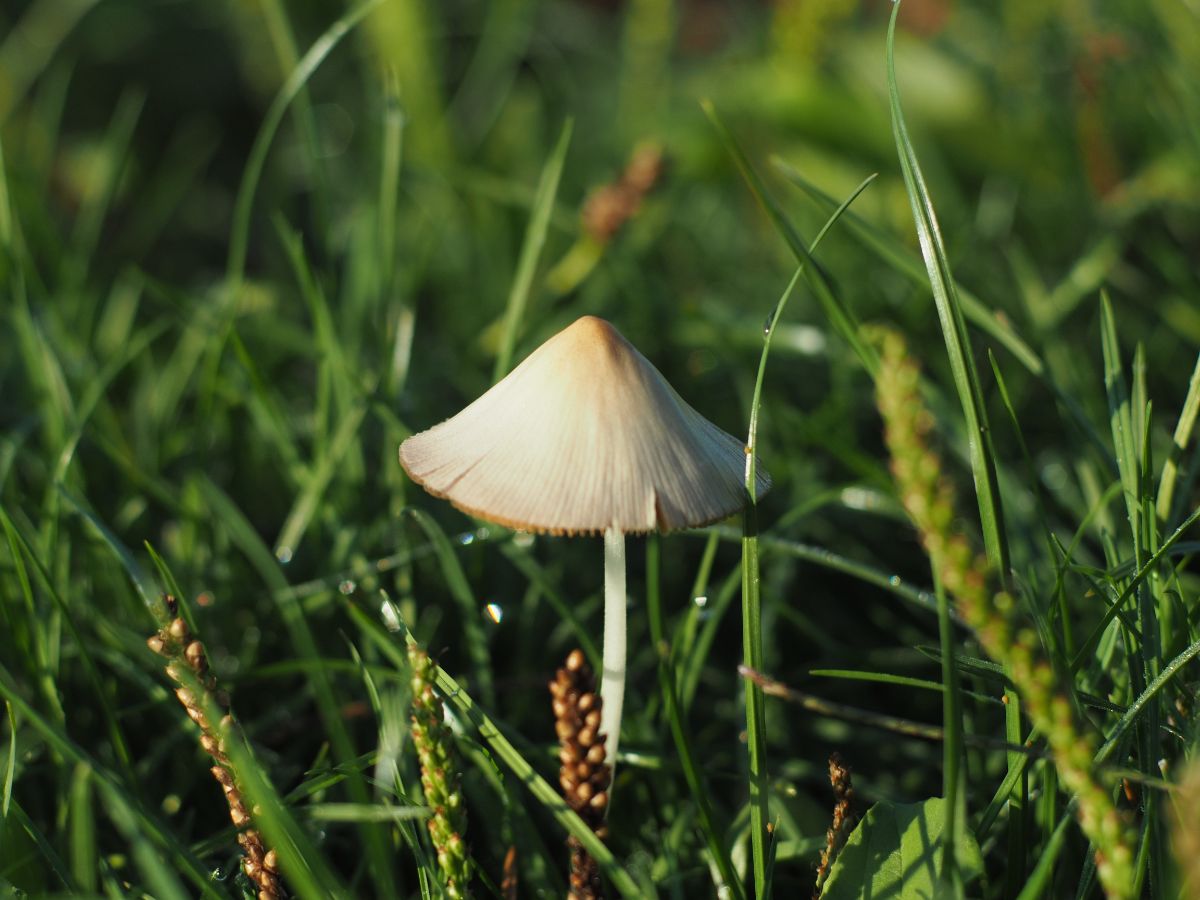
Milky Conecap Lookalikes
Bolbitius titubans
This mushroom can be mistaken for the milky conecap due to its similarity in color when it is older and its propensity for growing on lawns. It has a bright yellow, viscid, egg-shaped cap when young, which rapidly turns pale buff when fully mature. When it is young and very yellow, it is easy to tell apart. As it ages, though, the edges turn paler while the center of the cap remains yellowish-brown. Since an older milky conecap may turn brown or brownish in the center of its cap, it looks quite like this species.
The key differences are that B. titubans cap is slimy, especially when young. Also, the stem on this species is finely scaly or powdery, something the milky conecap lacks. Of course, mushrooms refuse to play by hard and fast rules, and sometimes the stem is bare. B. titubans is edible (not-toxic) but is rarely foraged because it is so small and not worth the effort.
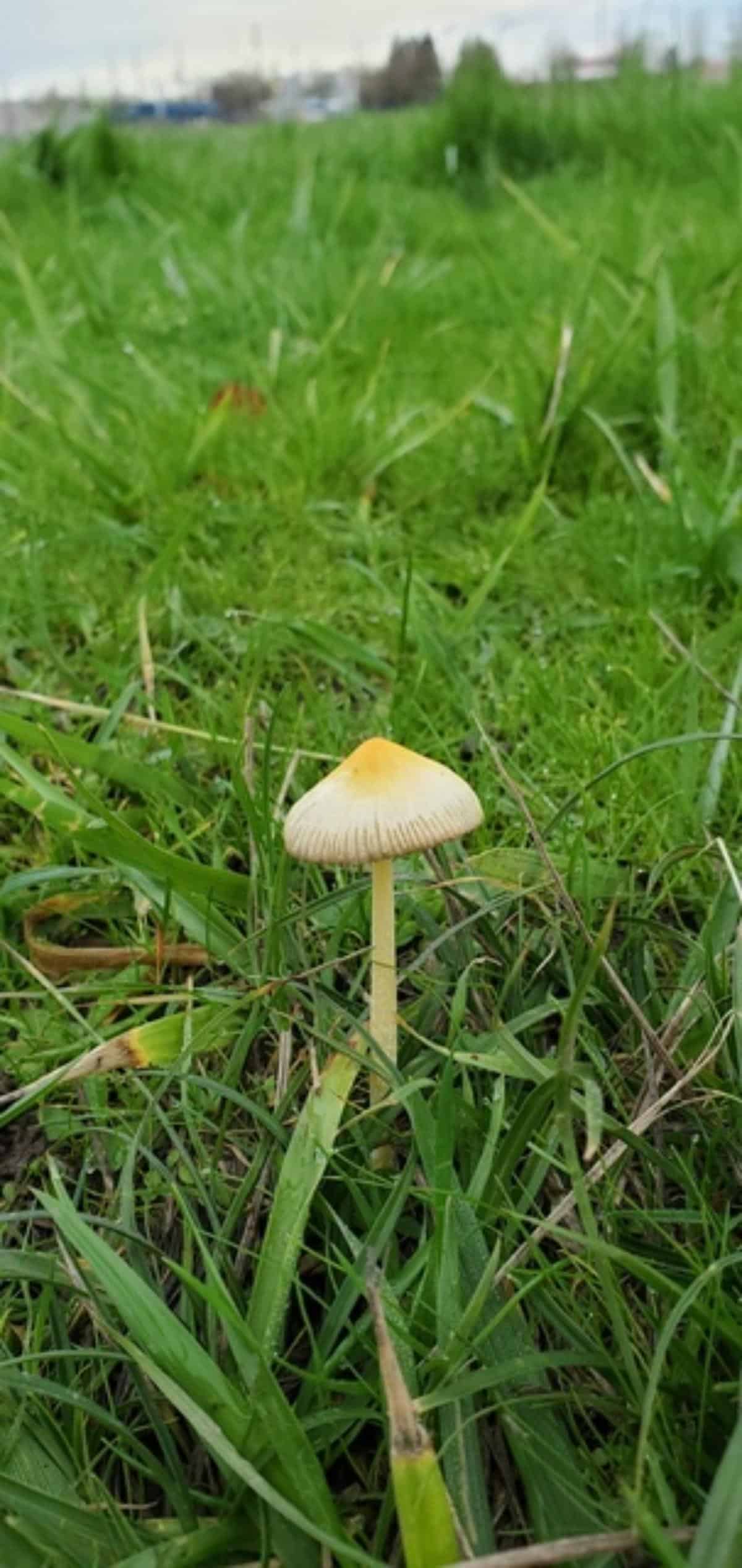
Lawnmower Mushroom (Panaeolus foenisecii)
The lawnmower mushroom starts out brown and likely won’t be mistaken for the milky conecap at that point. However, as the lawnmower mushroom ages, its cap turns buff to light tan, which can look quite similar to the conecap. The stem and cap of the lawnmower mushroom are generally much darker overall, though.
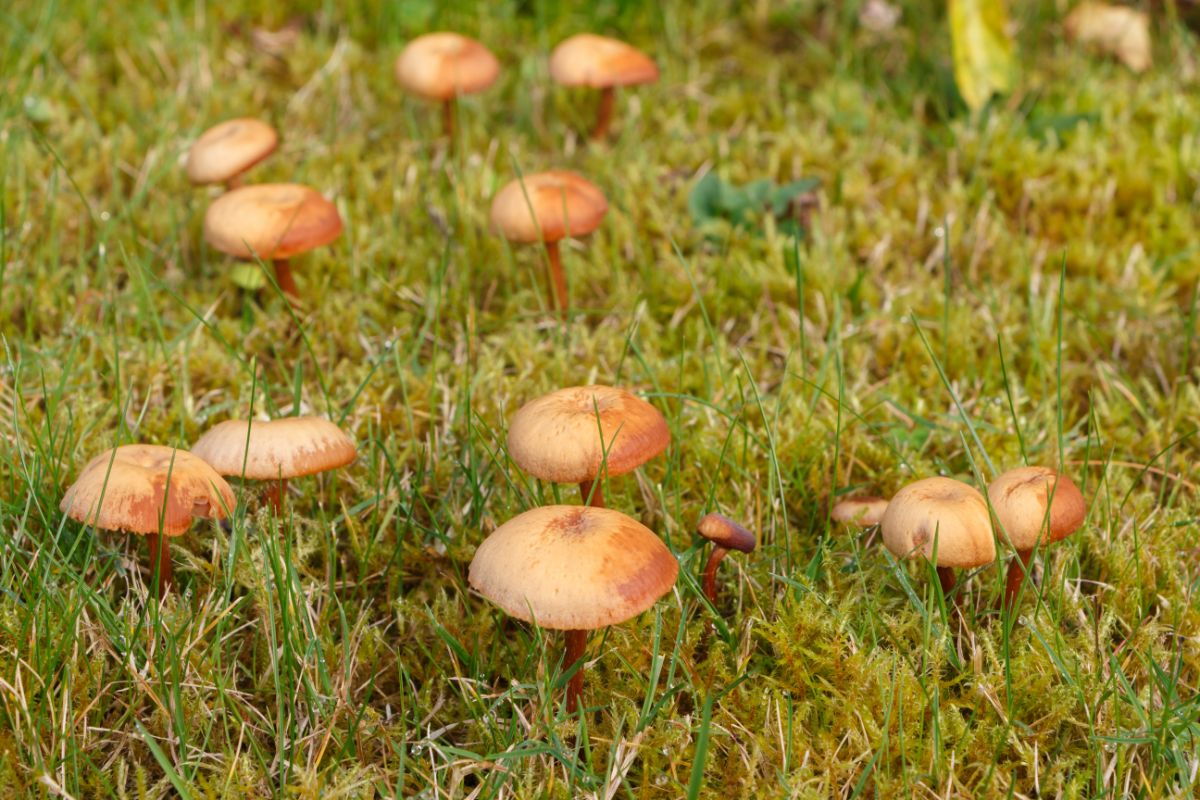
Milky Conecap Edibility
While some people may choose to consume milky conecaps, it is not highly recommended. Always exercise caution and consult a local expert if you are unsure of the identification of any wild mushroom.
The milky conecap is not typically considered a choice edible mushroom for several reasons:
- Size and Fragility: Due to its small size and insubstantial flesh, the milky conecap offers little culinary value
- Toxicity: Some Conocybe species are known to contain phallotoxins, the same toxins found in the infamous death cap (Amanita phalloides). As such, it is best to consider the milky conecap “suspect” and avoid consumption.
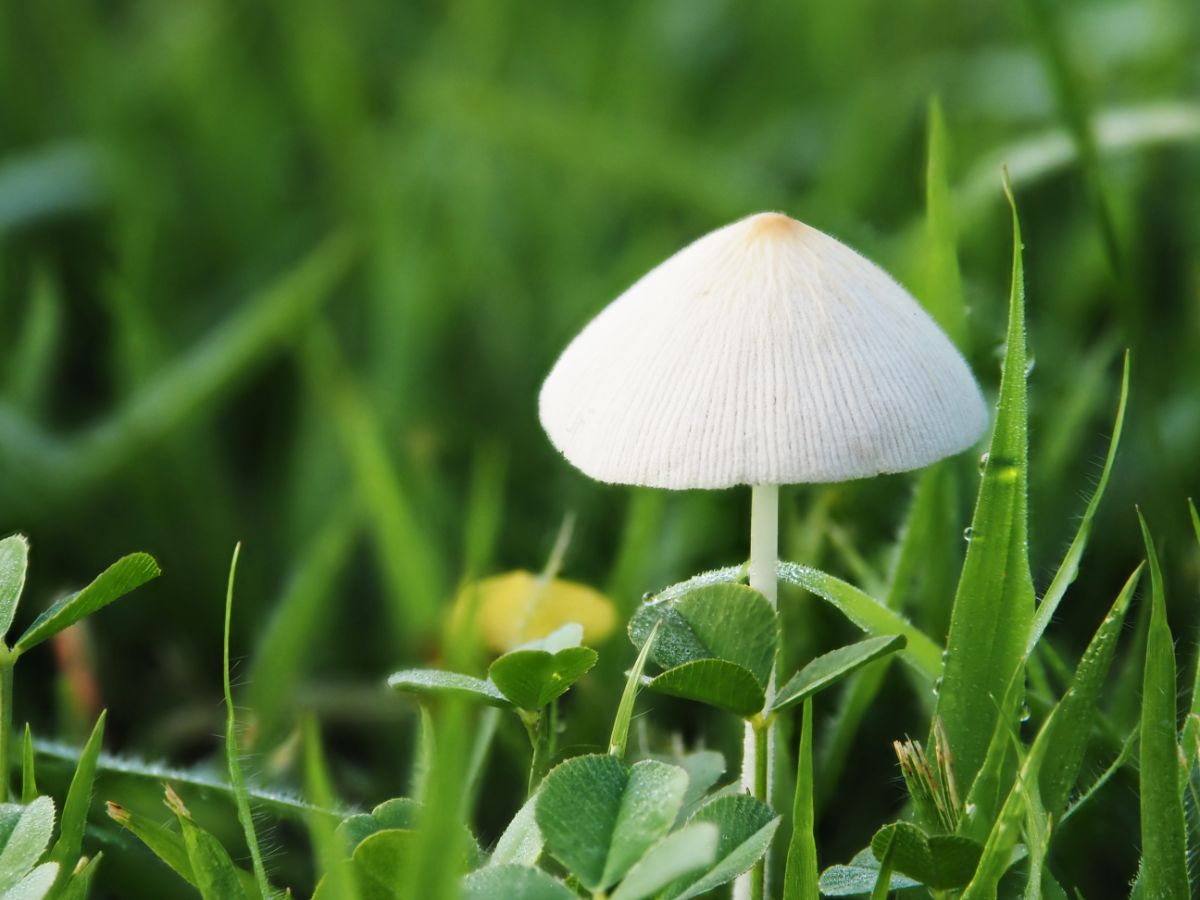
Removing Milky Conecaps From The Lawn
Milky conecap mushrooms are not harmful to lawns. In fact, they help break down organic matter and recycle nutrients back into the soil, which is a good thing! The presence of these mushrooms means you have a lawn rich in nutrients and organic material.
A lot of people may not appreciate the appearance of these little mushrooms on their lawns and want to get rid of them. However, eradicating milky conecaps from your lawn is nearly impossible, as they feed on the organic matter present in the grass. We suggest that instead of trying to remove them, consider embracing their natural role in the ecosystem of your lawn.
If you’re determined to remove the milky conecaps, you can try picking and discarding them. But this doesn’t really help much as it’s only removing the external part of the mushroom. The mushroom’s “roots,” known as mycelium, stretch underground, often for long distances. To get rid of the mushroom, you’d have to dig up all the mycelium, i.e., your entire yard.
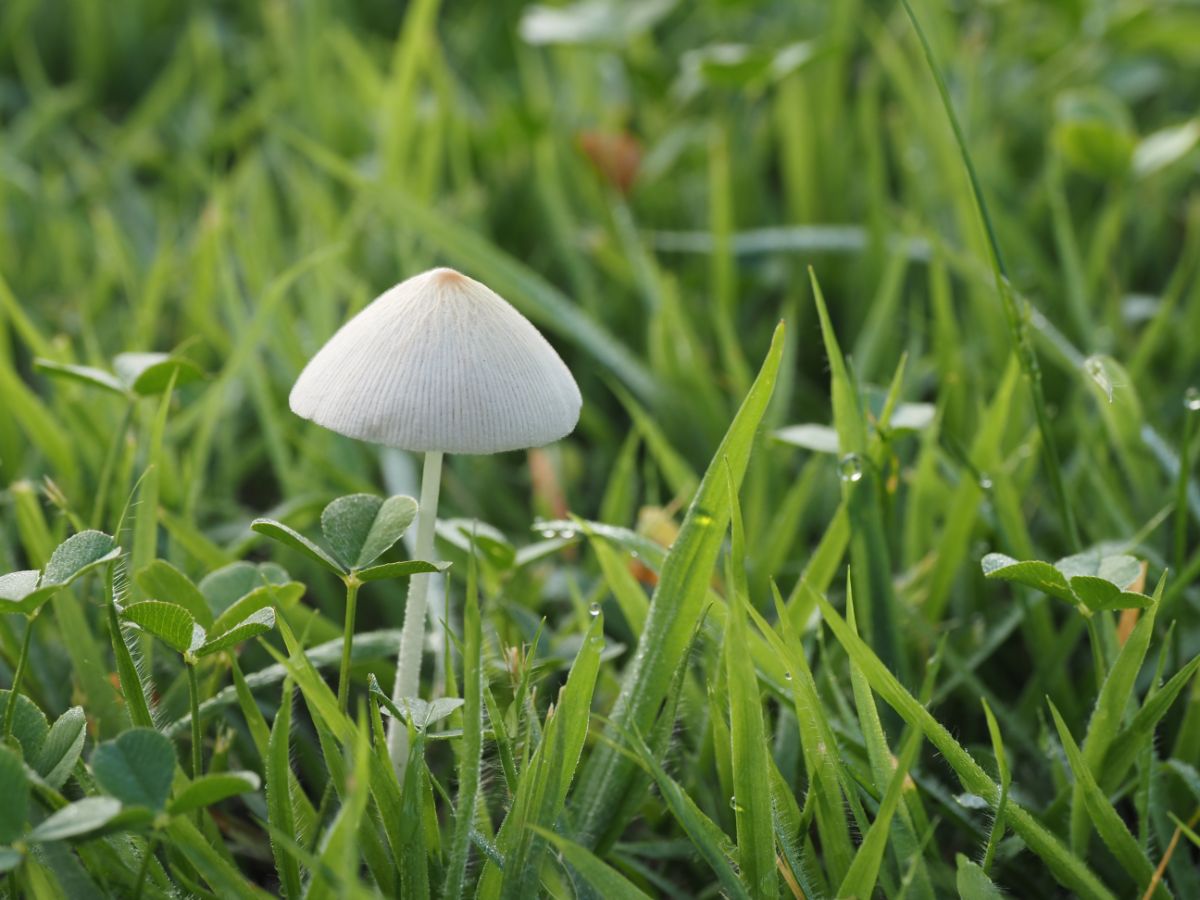
Milky Conecaps Common Questions
What happens when you eat milky conecaps?
It may cause gastric upset which lasts for several hours.
Are all mushrooms growing in the lawn toxic?
No. But, many do contain varying levels of toxins. Others are absolutely harmless. Some are fine edibles. There is no overarching rule regarding toxicity of lawn mushrooms. Every species is different, so you must identify the species to know its toxicity.





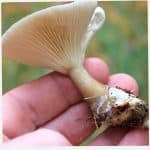



Karl Hillig says
Love your website. Just found one of these. Disappointed it isn’t hallucinogenic. I guess Conocybe is close.
Karl Hillig says
Addendum
My Conecap is gray with white nipple top and fringe. Wet with dew, no slime. Seek identified as snake or crab. Would only let me take photo sideways. Different species? Hallucinogenic? A person can still dream, can’t they? Didn’t check news for latest presidential directives.
Susan Macaluso says
Our 12-year-old chaweenie spent two days in the hospital after ingesting milky conecap mushrooms in our yard. He had an anaphylavtic response (in dogs the reaction is not respiratory, but gastrointestinal). He threw up and defecated everywhere, before collapsing. Epinephrine was absolutely necessary to save his life initially, but later, as he had aspirated vomit, which caused pneumonia, he required life-saving antibiotics and two days in an oxygen chamber. These ‘shrooms are no joke. He’s fine now, and I think it’s because he is a chonk dog. Any smaller pup would likely have succumbed. So, give ’em snacks. Just dont let them outside after the rain, when the mushrooms grow in full force! We had no idea the mushrooms were out there, nor did we ever think he would chomp down on them.
Jenny says
That is horrific! I am SO glad you pup is okay. What a terrible experience. I didn’t know they were so toxic for dogs – thanks for this information and warning!